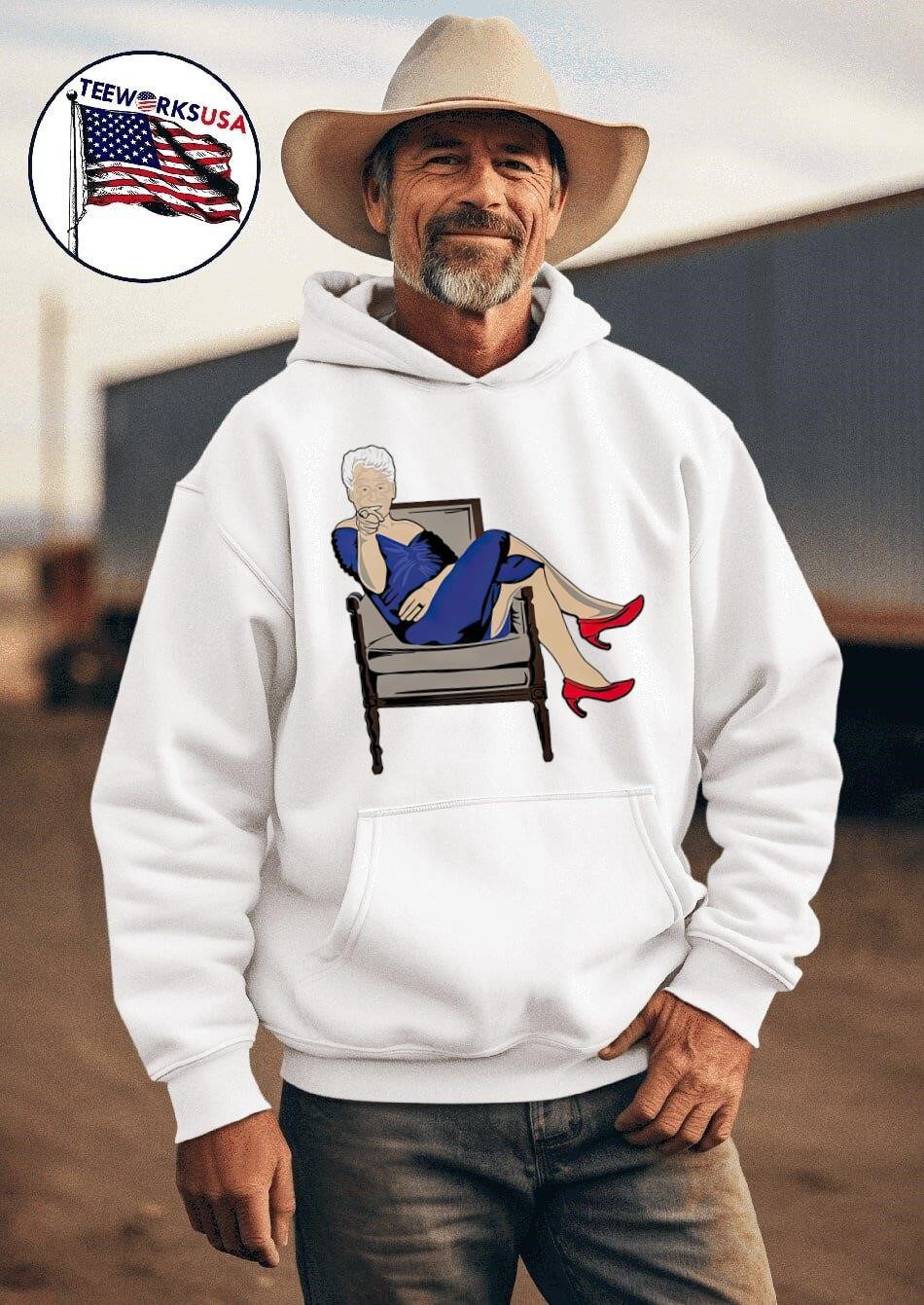Bill Clinton in blue dress and red heels cartoon shirt
$22.99

Frequently bought together :
Overview
The Bill Clinton in Blue Dress and Red Heels Cartoon Tee has emerged as a classic emblem of political mockery. Its origin was spurred by the notable Monica Lewinsky controversy, which rocked the country in the late 1990s. The tee displays an illustration of the ex-President Bill Clinton dressed in a blue frock and red stilettos, humorously exaggerating the scandal’s nature.
Purchasing the Bill Clinton Cartoon Tee with Blue Dress and Red Heels
Acclaimed for its witty and comedic depiction of the Lewinsky scandal, the tee humorously encapsulates the absurdity of the affair, offering a playful reflection on a grave political incident. The depiction of Clinton in a dress and heels has morphed into a representation of the scandal, illustrating how power and impropriety can intertwine.
Besides its humorous aspect, the Bill Clinton in Blue Dress and Red Heels Cartoon Tee also carries cultural and political depth. It has been wielded as a protest tool against political insincerity, challenging conventional gender roles and societal expectations. This tee has been donned by activists, political figures, and laypeople, each imparting their unique perspective.

Bill Clinton Cartoon Apparel: Blue Dress and Red Heels
For others, the tee signifies a defiance of the era’s conservative political atmosphere. Displaying a male president in a dress and heels, the tee contests standard ideas of masculinity and power. It has become a symbol of pushing back against the traditional norm, humorously expressing opposition.
The Bill Clinton in Blue Dress and Red Heels Cartoon Tee has proven timeless, maintaining its appeal and relevance long after its debut. It has transformed into a cultural piece, recalling a pivotal political episode and showcasing satire’s strength in revealing contradictions and challenging societal standards. Its sustained popularity highlights its capacity to elicit laughter, provoke dialogue, and stimulate contemplation.
Today, the Bill Clinton in Blue Dress and Red Heels Cartoon Tee stands as a representation of political satire and cultural evaluation. It is a testament to humor’s significance and art’s power in questioning authority and driving transformation.


















 Zum speed 350z fairlady shirt
Zum speed 350z fairlady shirt
 Zulu Huey Newton You Believe In Violence T-Shirt
Zulu Huey Newton You Believe In Violence T-Shirt
 Zuccarello Applesauce Shirt
Zuccarello Applesauce Shirt
 Zolita Queen Of Hearts shirt
Zolita Queen Of Hearts shirt
 Zheani Worship The Spiritual Meat Grinder Shirt
Zheani Worship The Spiritual Meat Grinder Shirt
 ZHC X BKTSQD Green Flame shirt
ZHC X BKTSQD Green Flame shirt